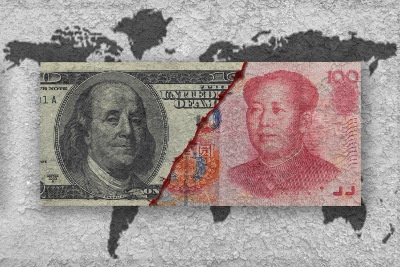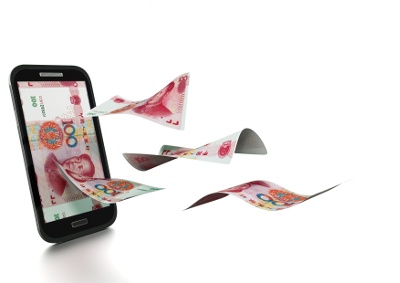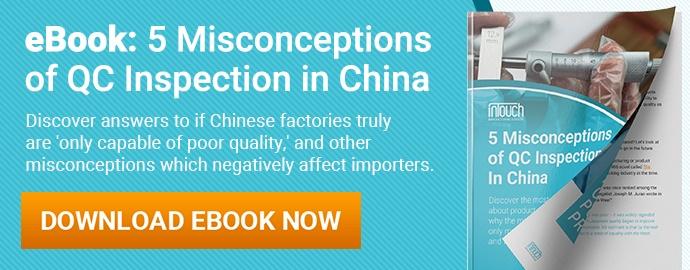Each Sunday, we publish a list of top articles and other content related to manufacturing in areas like quality control, product development, supply chain management, sourcing, auditing and law.
1. Who loses in a trade war between the U.S. and China?
It’s no secret that China and the United States are major trade partners. In 2015, according to the Office of the United S tates Trade Representative, goods and services trade with China totaled around $659.4 billion. But despite this impressive number, there are some that believe China doesn’t need the U.S. for trade.
tates Trade Representative, goods and services trade with China totaled around $659.4 billion. But despite this impressive number, there are some that believe China doesn’t need the U.S. for trade.
This belief partly comes as a response to President Trump’s threats to impose tariffs on Chinese goods as high as 45 percent, which stand in stark contrast to the current average tariff rate of 3 percent. And according to Gene Ma, chief economist for China at the Institute of International Finance, tariffs that high would result in a direct and sizable impact on China’s economy. The economic pain isn’t one-sided, though.
American companies like Walmart and Apple profit greatly from trade with China. And the significant price increases from Trump’s proposed tariffs are likely to harm everyday consumers the most. Furthermore, the author of this article points out that the U.S. needs China more than the other way around because China’s domestic brands produce loads of products, like laptops and cell phones, that it can sell both at home and abroad. Chinese consumers are increasingly less dependent on American brands.
As one example, the author also points to the case of potential business between American-owned Boeing and China. China can easily turn to European-owned Airbus for similar products in the event that trade with the U.S. becomes difficult. China, it seems, has options and flexibility that the U.S. doesn’t.
What’s your take on trade between America and China? Let us know in the comments below.
If you’re interested in finding out why the author believes China doesn’t need the U.S. for trade, take a look at the full article by following the link below:
Why China Doesn't Need The U.S. For Trade – Winter Nie, Forbes
2. China’s new name-shaming regulations
If you try to avoid labor laws in China, you’re going to pay the price…in the form of your reputation.
The Ministry of Human Resources and Social Security (MHRSS) is now administering two regulations that took effect on January 1st. What do the regulations do exactly? To put it briefly, they allow the government to publicly shame companies, both foreign and domestic, that violate labor laws.
Specifically, if a company is found to have significantly violated any labor protections,
The naming regulation will publicize offending employers with announcements on the MHRSS website and in mass media such as newspapers, magazines and TV channels in the employers' regional markets. The announcements will include the employer's name, address, registration code; the full name of the legal representative or key person in charge; the exact violation and the fines or other punishments imposed.
It’s important to remember that publicly scrutinizing companies like this is only for serious violations. But that’s not to say if your company is suspected of even minor abuse that you’re completely off the hook. You never know if someone has it out for you or if the government may want to make an example of you.
You might shrug off this risk and say “it won’t happen to me”… until it does. Aside from it being the right, ethical thing to do, staying aware of social compliance and brand retail standards, like those of Walmart, is a step toward ensuring you don’t wake up one day to find your company on the front page of a Chinese newspaper.
To read the full article covering these new regulations enforced by the MHRSS, click the link below:
China: New Labor Laws Seek to Pressure Chinese Employers – Mark Melnicoe, Bloomberg BNA
3. Taobao villages: an escape from poverty for millions
Taobao, a part of Alibaba, is like the eBay/Amazon of China when it comes to buying just about anything. Except it’s much, much bigger. Taobao, together with Alibaba’s other online shopping platform Tmall, together sold $485 billion worth of goods in 2016, compared to the $341 billion sold by all U.S. online retailers combined.
 As a result of Taobao, villages all across China have been given a chance at economic salvation in what would otherwise be remote and poverty-stricken areas. Elderly villagers that decided to stay, in contrast to their younger counterparts that moved to cities with more job opportunities, have taken up making all sorts of knick-knacks. Buyers throughout China have access to buying all that “stuff”, including anything from children’s bikes to costumes, which gives the village residents much needed income.
As a result of Taobao, villages all across China have been given a chance at economic salvation in what would otherwise be remote and poverty-stricken areas. Elderly villagers that decided to stay, in contrast to their younger counterparts that moved to cities with more job opportunities, have taken up making all sorts of knick-knacks. Buyers throughout China have access to buying all that “stuff”, including anything from children’s bikes to costumes, which gives the village residents much needed income.
The benefits of e-commerce are so substantial to these places that in one such village, Daiji, you can find the phrase “Through Taobao, you can escape bitter days. E-commerce runs toward the road of happiness,” painted on a wall.
And the amount of villages engaging in E-commerce through Taobao shows no signs of shrinking. In support of more Taobao villages, the local government in some areas has offered assistance in the form of low-cost loans and training classes, among other incentives.
Development of the interior: a boon for future manufacturing?
These Taobao villages could become a great foundation of industry and commerce given the right conditions. Although China generally remains competitive for importers, sometimes relatively high or increasing labor costs cause importers to relocate operations to countries in Southeast Asia with cheaper labor.
In several years, however, after Taobao villages mature and further develop their capabilities and infrastructure, manufacturers on the coast of China might consider moving inland to some of these villages where costs are often relatively low and goods more affordable for buyers.
Curious about Taobao villages? Get the full scoop by reading the article in the link below:
Once poverty-stricken, China’s “Taobao villages” have found a lifeline making trinkets for the internet – Josh Freedman, Quartz
4. Sustainability’s newfound importance in purchasing
Most customers want to pay a competitive price for what you’re selling. But how far would you go to keep prices low when the planet is paying a price?
Today, more and more companies are aware of the importance of sustainability in their supply chains. Sure, a bicycle company can sell bikes for $5 less than everyone else and will probably do well for a while. But if it’s discovered that the facility producing the bikes leaves local rivers and air terribly polluted, the company faces a giant, almost inevitable storm of brand backlash either from consumers or major retailers.
Talking about sustainability and its importance is one thing, but proving it is another. And that’s where the 2017 Sustainable Procurement Barometer comes into play. Created by the HEC Paris business school and the organization EcoVaidis, the report surveyed 120 procurement officers and reveals a trove of data related to how integral sustainability is in a supply chain.
The co-CEO of EcoValdis, Pierre-Francois Thaler, went so far as to say,
Sustainable procurement is no longer a nice-to-have – it’s an integral business function responsible for protecting and improving brand reputation, driving revenue and mitigating business risk.
Does sustainability play a role in your supply chain? Do you agree with what Pierre-Francois said? Let us know in the comments below!
Dive into the data on sustainability by clicking on the link to the report above or get a look at some key findings by following the link below:
Corporate Procurement Officers Say Sustainability Now Key Criteria for Purchases – Kelli Barrett, EcoSystem Marketplace
5. Which engineering capabilities to check when working with Chinese suppliers
Sometimes, when approaching manufacturers in China, most of the hard work is already pretty much done. You might, for instance, want to buy a speaker.  The factory has made speakers for years and has already designed the ones you want. All you have to do is put money down for the order and take care of logistics hurdles to distribute them on your own.
The factory has made speakers for years and has already designed the ones you want. All you have to do is put money down for the order and take care of logistics hurdles to distribute them on your own.
But this isn’t always the case. You might like what the speaker factory is selling, but you want to make some design changes, for example. You might even want to design something entirely from scratch with the factory. Your grand plans, however, might come to a screeching halt if your supplier has inadequate engineering capabilities.
As the author points out, when you’re vetting a supplier for suitability to meet your development and production needs, it’s important to consider these five areas:
- CAD compatibility
- Design capability
- R&D capability
- Prototype capability
- Initial prototype testing capability
A deficiency in one of these areas could mean setbacks and headaches for your business. Find out the details of each and what they mean for production by checking out the article in the link below:
China Supplier Vetting, Part 3: Evaluating Engineering Capability – Renaud Anjoran, Qualityinspection.org
We’re constantly scanning the web for top manufacturing stories and news. If you’d like to submit an article for consideration for our weekly Best in Manufacturing, send us a message and let us know







